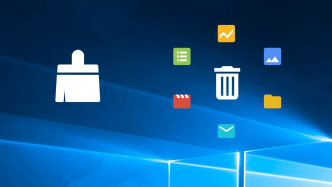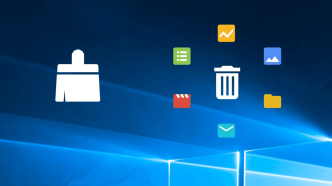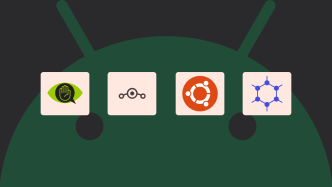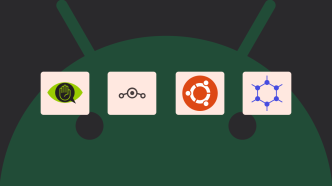Decentralized social media platforms are upending the traditional approach to digital communication. Unlike mainstream platforms such as Facebook or Twitter, which centralize user data and act as the arbiters of content, decentralized alternatives distribute these roles across multiple nodes. Imagine each node as a contributor in a communal project, where everyone brings something to the table, and there’s no boss dictating the rules.
But why is this transition happening in the realm of social media? It boils down to control and freedom. In decentralized platforms, you’re not just a user; you’re a participant. You have a direct say in how data is stored, shared, and even monetized. It’s akin to having a conversation in an open field, as opposed to being overheard in a corporate cafeteria where every word is scrutinized.
The shift toward decentralized social media networks isn’t just a techie’s daydream. It opens up a Pandora’s box of questions regarding data privacy, censorship, and online governance. For instance, how does this model impact the fight against misinformation? Are decentralized networks inherently more secure, or do they pose new types of risks?
If you’ve been looking for a way to break free from the confines of centralized social media platforms, or you’re just intrigued by this seismic shift, this article aims to lay it all out for you.
Mastodon
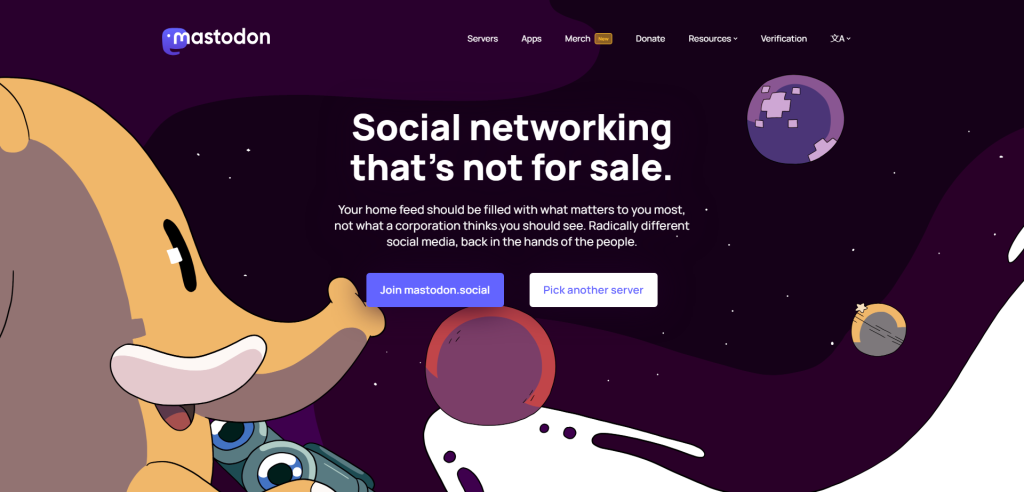
Mastodon is an open-source social media platform that serves as an alternative to centralized platforms like X (formerly Twitter). It’s built on a decentralized architecture, enabling multiple “instances,” or servers, to host independent communities. What does this mean for you, the user? You have a lot more freedom to customize your experience and avoid the heavy hand of a single controlling entity.
Why should anyone consider hopping onto Mastodon? First off, the decentralized nature of the platform means you get to pick the rules you play by. Different instances have different guidelines, so you can choose an environment that aligns with your values. You’re not beholden to the whims of a monolithic organization.
But wait, there’s more. Mastodon uses a chronological timeline. Yes, you heard that right: posts appear as they’re made, not in some algorithmically sorted order that’s optimized for engagement but maybe not your sanity. Your feed is under your control again.
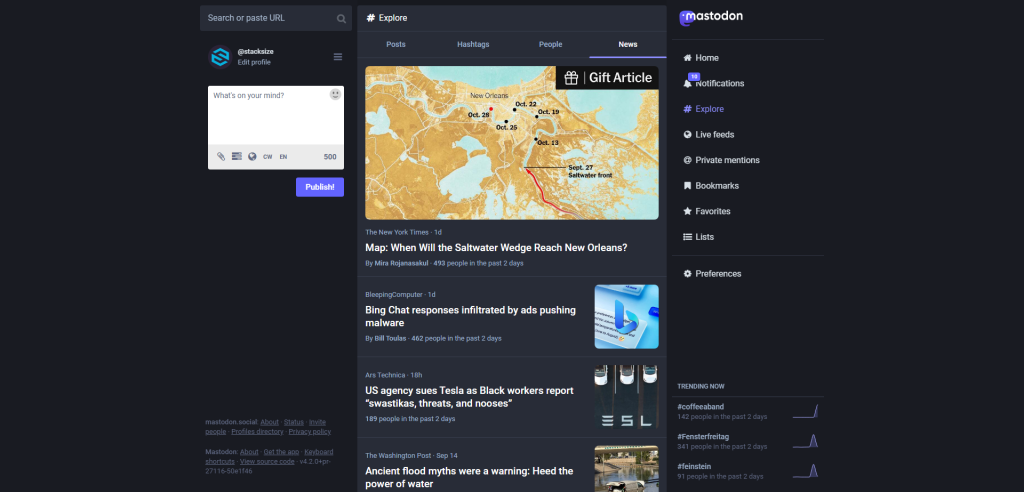
What about the interface? It’s quite user-friendly, featuring a clean layout that newbies will find easy to navigate. And for the developers among you, Mastodon’s API allows for a host of third-party apps and services, adding a layer of versatility that’s often lacking in centralized platforms.
Are there downsides? Of course. For one, the network is smaller, which means fewer people to interact with. And, depending on the instance you choose, moderation can be spotty. But these are trade-offs some are willing to make for a more democratic, user-focused platform.
So, should you give Mastodon a whirl? If you’re tired of algorithmic feeds and crave a more community-focused experience, it might just be worth your time.
diaspora*
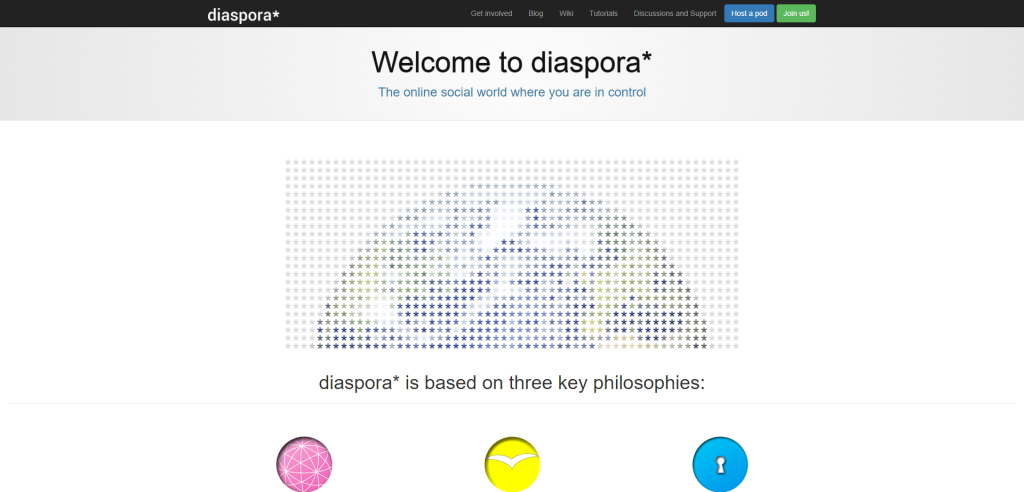
Diaspora* is a decentralized social network, meaning that it doesn’t rely on a single, central server to operate. Instead, its infrastructure consists of independently-run nodes, known as “pods,” each hosted by different organizations or individuals. It offers an alternative to mainstream social networks like Facebook and X, emphasizing user privacy and data ownership.
Here’s the crux: you’re in control. In Diaspora*, your data isn’t stored on some monolithic data center, open for potential scrutiny or monetization. When you post a photo or update your status, it stays on the pod you’ve chosen. This localized control can be appealing to those who value privacy and decentralization.
But why opt for a pod-based structure? Imagine a neighborhood where each home has its own rules. You decide which house to enter based on those rules, but once you’re in, you can talk to anyone from any house in the entire neighborhood. This structure makes it harder for any single entity to wield too much power, or for any single point to fail and bring down the network. Your data is your own, and you decide where it resides and who sees it.
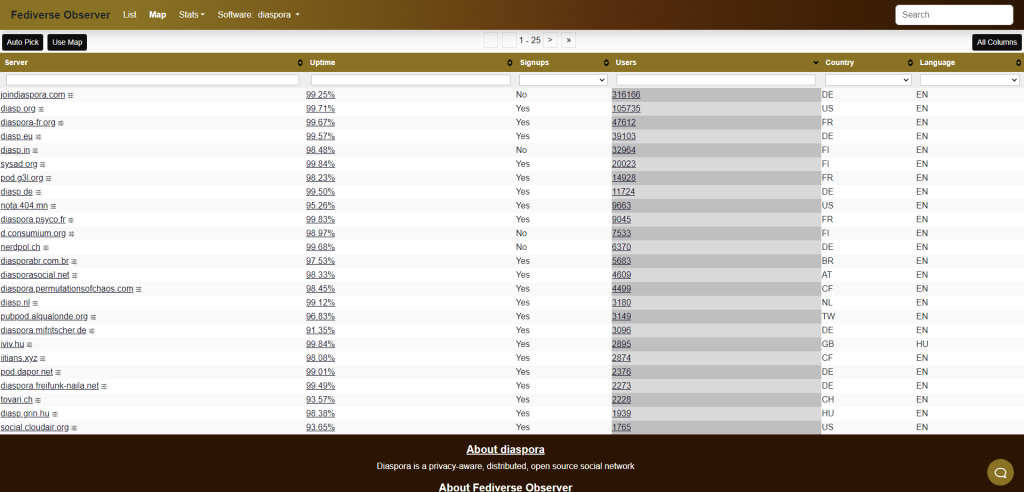
So what’s the catch? Well, with freedom comes responsibility. You’ll need to be proactive about your own security and data backup. Also, the user interface might not be as polished as those of the more established platforms. Yet, for those who are tech-savvy and privacy-conscious, these might not be deal-breakers.
And what about the future of Diaspora? Given the increasing concern over data privacy and corporate control, platforms like Diaspora have a unique appeal. However, its long-term success hinges on user adoption and ongoing community support. It’s not just another social network; it’s a statement on how social networking could evolve, for better or worse. Will it disrupt the titans of today’s social media world? That’s still up in the air, but its existence raises questions we all should be pondering.
Friendica
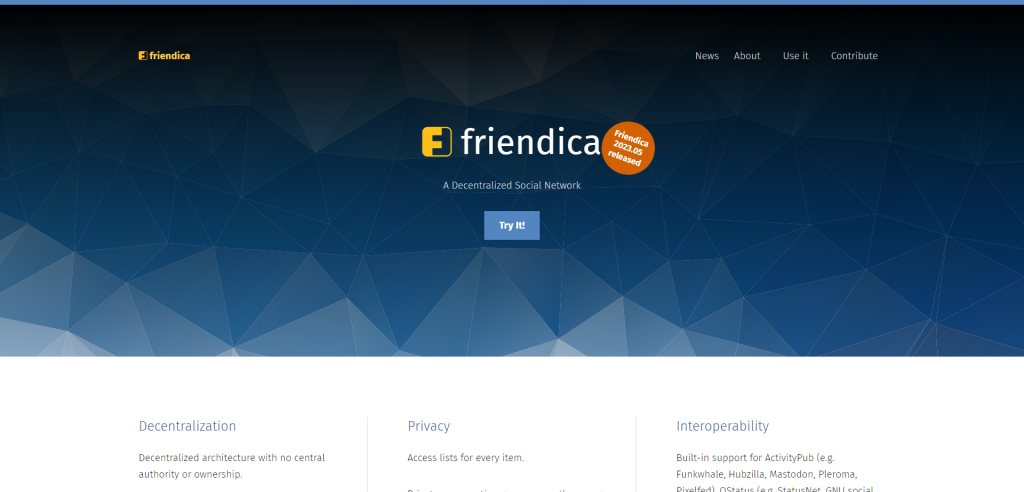
Friendica is a decentralized social network platform that aims to give users more control over their online experience. It’s part of the larger Fediverse, a collection of interoperable platforms where users from one network can interact with those from another. Friendica sets itself apart by supporting a wide range of protocols, including ActivityPub, OStatus, and Diaspora. This gives it a broad scope for connectivity, allowing users to follow and interact with accounts not just from Friendica but also from platforms like Mastodon or Pleroma.
So, what’s the big deal? Imagine being able to text your friends regardless of their phone carrier. It’s that, but for social networking. You’re not stuck in a walled garden like Facebook; instead, you can roam freely. That interoperability is a strong suit, but it also means Friendica has to juggle compatibility issues, making sure its software plays nice with the rest of the Fediverse.
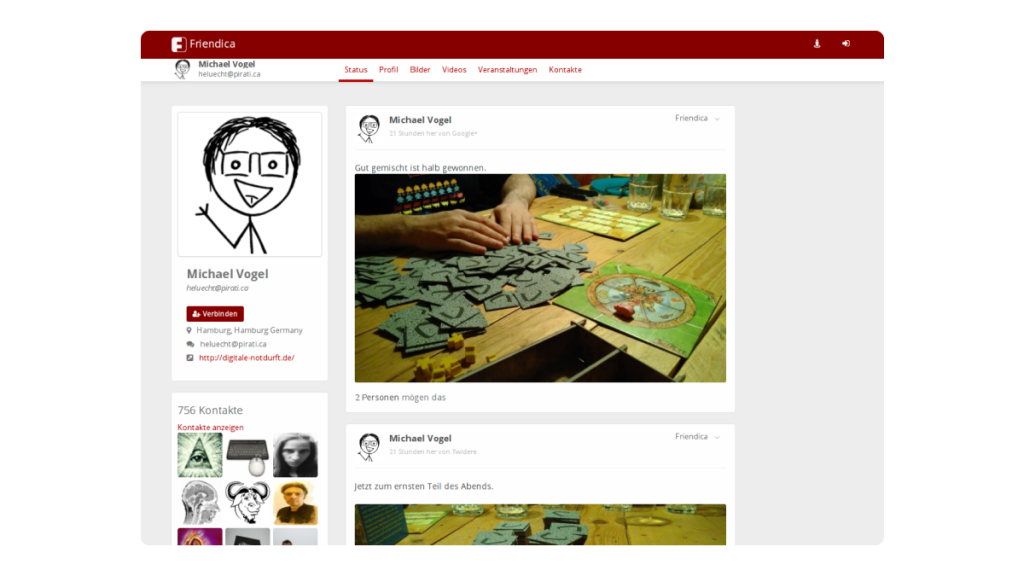
From a user standpoint, Friendica offers an experience that will feel quite familiar if you’ve used any mainstream social media platforms. It has the features you’d expect: status updates, photo uploads, and events, among others. It’s also customizable, both in appearance and in function, thanks to a range of plugins. That’s like having a smartphone where you can swap out the camera or battery; it’s a more tailored experience.
But what are the caveats? For one, you’ll likely find fewer of your friends and family there, unless you’re in tech-savvy circles. There’s also the learning curve; decentralized platforms often require a bit more setup and technical know-how than their centralized counterparts. Ever tried to fix your own plumbing? It’s kind of like that; possible but not always straightforward.
Friendica represents a shift toward a more user-centric, less siloed approach to social networking. It’s not perfect, and it’s not for everyone, but it offers an alternative that puts control back in the hands of the user. Interested? It might just be worth taking for a spin.
PixelFed
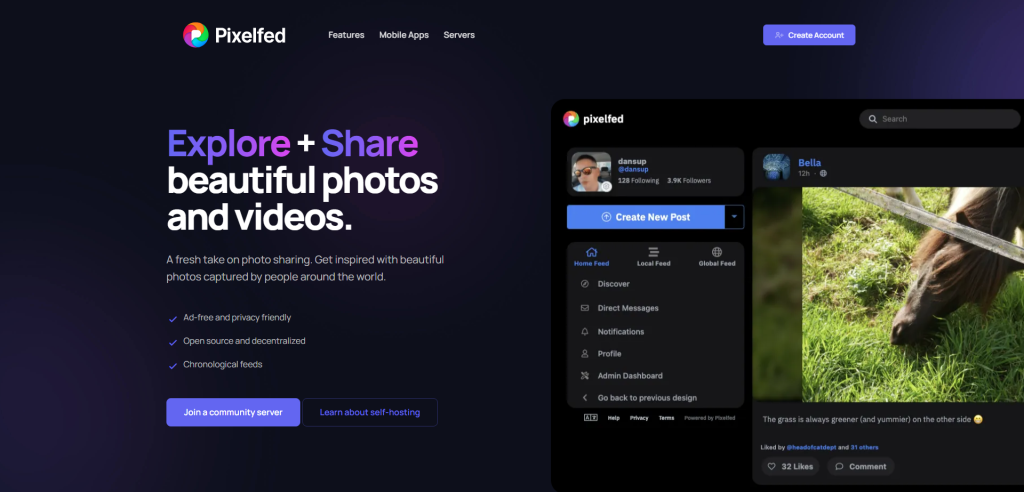
PixelFed is a free and open-source social media platform aimed at replicating Instagram-like functionality while prioritizing user privacy. Built on the ActivityPub protocol, it is part of the larger Fediverse, a collection of social networks that can interact with each other. This offers two key advantages: decentralization and interoperability. You’re not tied down to a single corporate entity controlling your data; rather, you can choose from multiple independent PixelFed instances to join or even host your own.
So, why does decentralization matter? Well, think of it as having multiple independent coffee shops instead of one massive Starbucks. Each shop can offer its unique flavor, and if one doesn’t meet your taste, you can easily hop over to the next. Similarly, if one PixelFed instance shuts down or enacts policies you disagree with, you can switch to another without losing the ability to interact with your existing network. This way, the power dynamic shifts in favor of the users, not the platform.
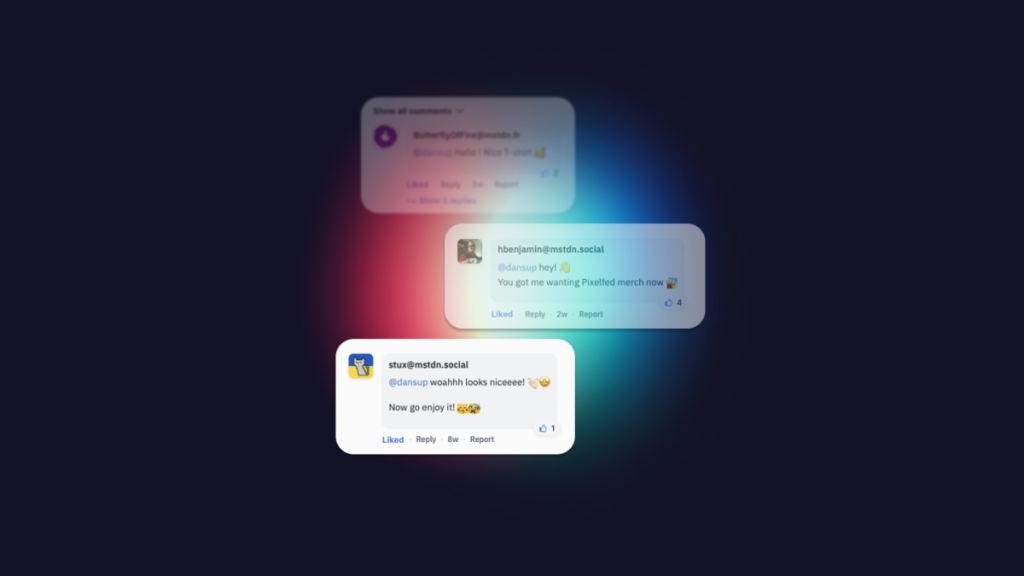
The user interface is clean and intuitive, borrowing heavily from Instagram’s design elements. You get the usual features: posts, filters, comments, and likes. However, one glaring omission, at least for some, is the lack of an algorithmic feed. Your timeline is chronological, a nod to simplicity and user agency.
Security-wise, PixelFed doesn’t slouch. It adheres to robust security standards and data protection laws. Additionally, the open-source nature means anyone can scrutinize the code for vulnerabilities.
So, is PixelFed the next Instagram killer? Probably not, at least not in the immediate future. But it does offer a compelling alternative for those tired of the ads, data mining, and the general corporate miasma that comes with mainstream platforms. And given its community-driven approach, who knows? Maybe it will carve out its unique niche in the social media landscape.
Aether
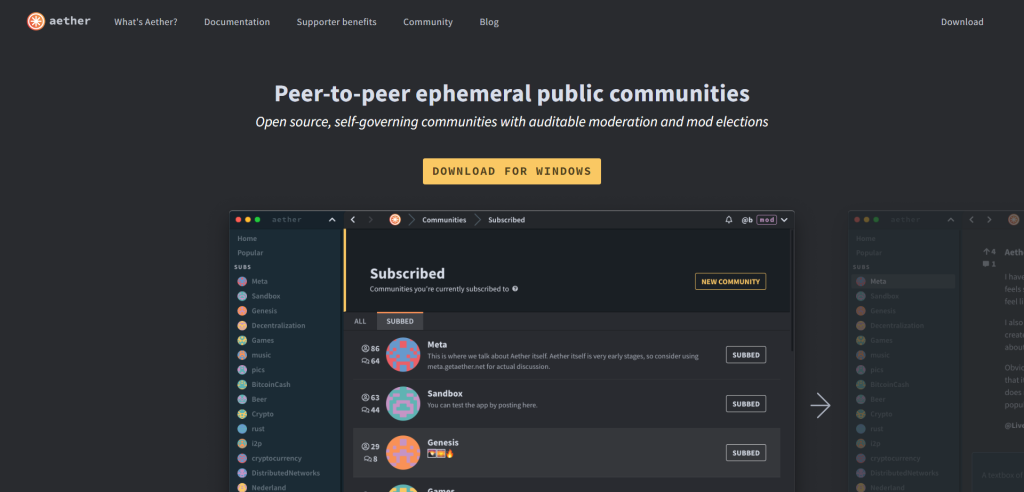
Aether is not your conventional social media app; it fundamentally diverges from mainstream platforms like Reddit, X, or Mastodon in several key ways. Designed to cater to your interests, Aether operates on a peer-to-peer network, allowing you to establish communities around topics that resonate with you. Sounds familiar? Here’s where it diverges: the content you share on Aether is ephemeral and disappears after six months. Plus, communities are democratic—they elect their own moderators.
While your tweets or Reddit posts are etched in the annals of the internet, Aether’s posts come with an expiration date. After six months, they disappear from the network. This built-in obsolescence may make you feel less inhibited about sharing content; it won’t haunt you forever. Let’s say you’ve got a stash of Spongebob memes you’re dying to share. Go ahead, post them. In six months, they’ll be wiped clean, leaving room for fresh content.
Why does this matter? For starters, this gives you a degree of privacy and freedom not often seen in online platforms. Additionally, this ephemerality is not just a feature—it’s a guarantee. In Aether’s decentralized network, each client must implement this six-month retention rule as part of its protocol.
Democratic Communities: Users Over Mods
Aether provides a refreshing twist on community governance. Unlike traditional platforms where moderators wield significant power, Aether communities are democratic. When you post on Aether, let’s say a picture of your beloved motorcycle, and it gets deleted by a mod, you’re not just left to grumble in the corner.
In Aether, you can downvote the mod, essentially casting an “impeachment vote.” If the majority of community members feel the same way, the mod is temporarily ousted from their role. This creates a dynamic where the community’s current users actively shape its rules, as opposed to platforms where the first person to claim a space holds disproportionate power.
The Technology Behind Aether
Let’s get a bit technical for a moment. Aether doesn’t operate on centralized servers that can be shut down at any time. Instead, it’s a peer-to-peer network. This ensures that your data is not housed in a specific location but exists in a decentralized space—sort of in the void between computers. Aether is more akin to a protocol like email than an app.
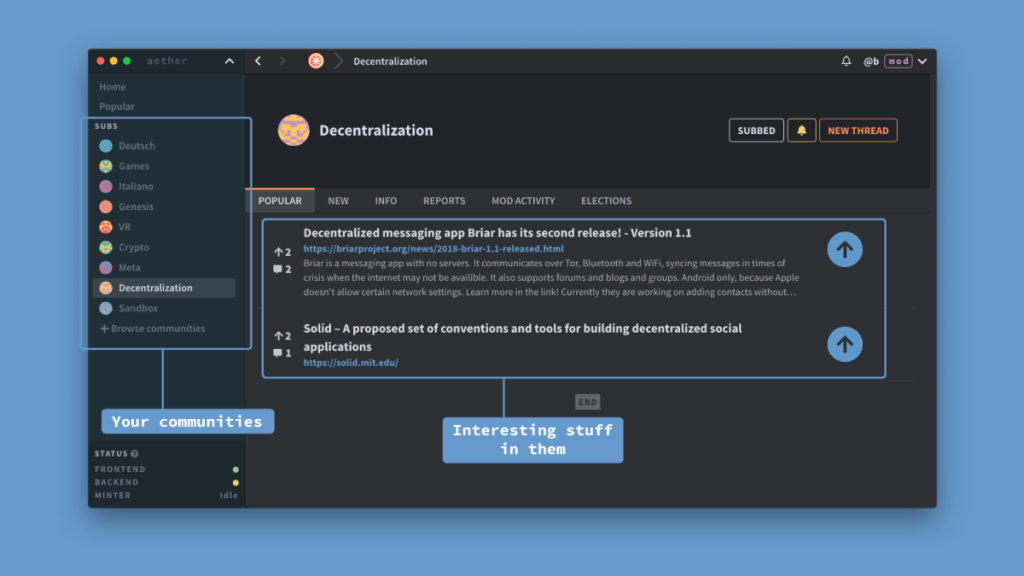
Gmail could go offline, but email, as a protocol, would continue. Similarly, Aether lives as long as there’s at least one node using its protocol. Moreover, all moderation and rendering processes occur on your local machine, providing an additional layer of trust and transparency.
Unlike Mastodon, which is federated, or Secure Scuttlebutt, which operates on a gossip protocol, Aether is a flood protocol-based network. This ensures that all users have access to the same data pool, irrespective of their connections or the servers they are associated with. It’s like a public square that anyone can enter and participate in, with all posts visible to everyone.
Aether disrupts the traditional social media model by offering ephemeral content, democratic community governance, and a decentralized, transparent technology infrastructure. Whether you’re keen on sharing your ever-changing interests, discussing current affairs, or even posting memes, Aether creates a space where your voice carries weight, without leaving an indelible digital mark.
Summary
In the evolving landscape of social media, decentralized platforms have emerged as more than just a buzzword; they’re a burgeoning reality. By distributing the responsibilities of data storage and content moderation across a network of nodes, these platforms are turning users from passive consumers into active stakeholders. It’s akin to a neighborhood watch program for the digital age, where community members share not only the benefits but also the responsibilities of maintaining a secure and open space.
However, this shift to a decentralized model isn’t a cure-all. It brings its own set of challenges, from data security concerns to the complexity of combating misinformation. Nevertheless, the questions it raises are both timely and crucial. As we grapple with issues of online privacy, censorship, and the monopolistic power of tech giants, decentralized social media offers a glimpse into a future where control could swing back into the hands of users.
In sum, decentralized social media networks signal a significant shift in how we think about online interactions. They aren’t just a passing trend but a critical response to long-standing issues that plague centralized platforms. Whether they are the future or a transitional phase, one thing’s for sure: they’re shaking the foundations of digital communication, compelling us to rethink and, possibly, rebuild.




